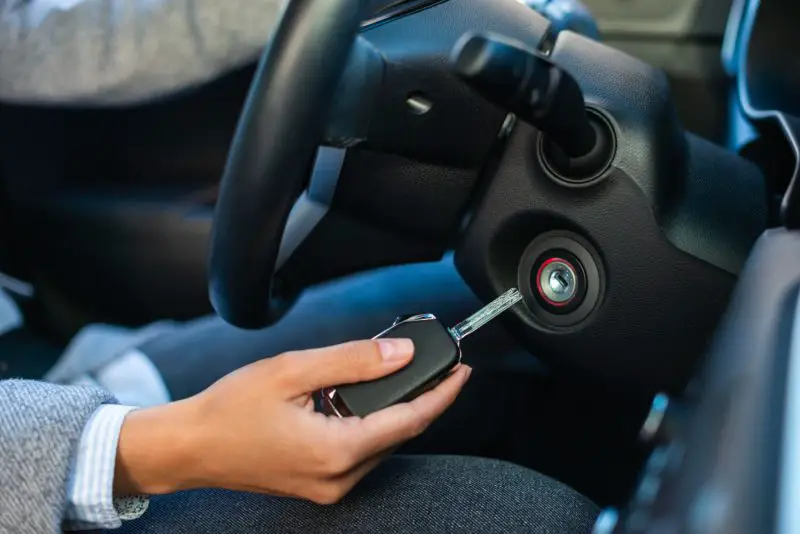If you’ve landed here, you’re likely in one of the toughest binds a Ford owner can face—disarmed by your own vehicle. The Ford Passive Anti-Theft System (PATS) is more than a piece of technology; it’s a guard, ready to immobilize your car at a moment’s notice in the absence of its sanctified key. But what if that key is nowhere to be found, or even worse, flawed? Is the vehicle rendered nothing more than a very expensive yard decoration? Certainly not!
In this comprehensive guide your are going to know some techniques if you are curious how to bypass ford PATS system without key. Here, you won’t find unethical shortcuts or band-aid fixes. Instead, you will discover the art of respecting your vehicle’s security system while leveraging legal methods to regain access to your Ford. Whether you are a Ford aficionado, a first-time owner, or a car security enthusiast, this guide is designed to enlighten and empower you with the knowledge to bypass the formidable Ford PATS without the use of a functioning key.
Table of Contents
Anatomy of Ford’s PATS
Before you start your technical maneuvers, it is crucial to understand the inner workings of PATS. PATS is a sophisticated transponder-based immobilizer system that communicates with a chip within the key to verify its authenticity. When the key is inserted into the ignition and turned to the ‘on’ position, the transceiver in the steering column sends a signal to the key. If this signal is not returned or is incorrect, the PATS control module interrupts the flow of fuel to the engine, ensuring that unauthorized attempts to start the car are futile.
Legal and Ethical Considerations
It is imperative to remind you that the bypass methods you will learn here should be used responsibly and with the law in mind. Bypassing PATS in a stolen, misappropriated, or unauthorized vehicle is illegal and punishable by law. It’s important to always have proof of vehicle ownership and to ensure that the vehicle is not under lien or in any way the property of another party.
Understanding Transponder Key Technology
The core of PATS is the transponder key. “Transponder” stands for “transmitter” and “responder,” denoting the key’s ability to both send and receive signals. When properly programmed, these keys contain a microchip with a unique serial number. Upon ignition, the car sends a challenge signal to the key. Only if the key’s response is the correct serial number will the vehicle start.
The Legal Bypass Playbook
The Spare Key Strategy
If you have a spare key, your tryst with PATS may be akin to a brisk morning jog rather than a marathon. A properly programmed key can reset the PATS system and allow you back on the road. Here’s what you can do with a functional spare key at hand:
Programming a New Key
If your Ford is an older model, you might only need a set of instructions to program a new key. This process typically involves a specific sequence of actions that you perform within the vehicle to program the PATS to recognize the new additional key.
Professional Keysmith Services
For vehicles with more recent PATS versions, especially those equipped with rolling codes, professional assistance from an automotive locksmith with the necessary programming tools and equipment is often the wisest path.
Remember, the goal with this strategy is not to decode or disable the PATS system but to properly engage it to recognize a new key.
The ECU (Engine Control Unit) Re-flashing Technique
For persistent issues with the PATS system or when all keys are lost, re-flashing the ECU has been cited as an effective legal bypass method. By resetting the ECU and reprogramming it, you give your vehicle a fresh start to recognize new keys. This procedure often necessitates specialized equipment and should ideally be done by a professional familiar with the process.
Consider OEM or Certified Service Centers
Authorized Ford service centers or technicians trained by Ford would be well-versed in maintaining the integrity of the vehicle’s electronic and mechanical systems while performing the ECU re-flashing.

The PATS Module Replacement Route
In extreme cases, a faulty PATS module can render your Ford a driveway ornament. Replacing the PATS module with a new or refurbished unit can provide a fresh setup, recognizing new or reprogrammed keys.
DIY Dangers
DIY PATS module replacement is not advisable. It requires mechanical disassembly of the vehicle’s steering column and manipulation of sensitive electronic components. An error during this process can lead to more significant issues, including putting other onboard systems at risk. Always opt for professional installation to ensure safety and avoid voiding vehicle warranties.
Also Read: Ford Raptor Years To Avoid
Expert Advice
Engaging with Ford owner communities and consulting with experts can provide valuable insights and experiences in dealing with PATS. Sharing your issue and listening to those with similar experiences can often lead to the discovery of effective, legal bypass techniques you might not have considered.
Professional Consultation
When in doubt, don’t hesitate to consult with a professional. Reaching out to automotive security experts or seasoned Ford technicians can offer tailored solutions to your PATS dilemma.
Common Myths and Misconceptions
In the pursuit of a Ford PATS bypass, you are likely to come across myths and shortcuts. It’s crucial to discern fact from fiction to avoid potential mishaps.
At-home PATS Bypass Kits
Advertisements for gadgets or kits claiming to bypass Ford PATS are often unreliable or outright scams, promising simple solutions to a complex security system. It’s best to approach these products with skepticism and exhaust other resources before considering a purchase.
Non-OEM Key Programming Devices
Devices sold online that claim to program transponder keys without an OEM or professional-grade reference or with guidelines that don’t apply to your Ford’s specific model year and type often disappoint. These one-size-fits-all solutions tend to be less effective than advertised and can even cause malfunction in your vehicle if used incorrectly.
Prevention and Risk Management
The best way to handle a PATS issue is to prevent it from happening in the first place. Some practices and technologies can minimize the risk of PATS-related incidents.
Diligent Key Management
Be mindful of where your keys are at all times and avoid exposing them to conditions that could damage the transponder chip. Simple steps like keeping your key on a separate ring from other keys can prevent wear and tear.
Transponder Key Cloning
Consider cloning your transponder key to create a backup. Most professional locksmiths can assist in transponder key cloning, providing an additional layer of security and peace of mind.
Aftermarket Security Systems
Upgrading to a more sophisticated aftermarket security system, in parallel with the PATS, can bolster your vehicle’s protection and could even provide bypass solutions within its own infrastructure if configured correctly. However, always ensure that these systems are legal and do not interfere with the operation of emergency services.
Conclusion
A Ford with a finicky PATS system can be incredibly frustrating, but engaging with it using responsible, legal methods not only respects the craftsmanship behind engineering marvels like PATS but ensures that your actions are within the boundaries of the law. By understanding the system, exploring legitimate bypass options, consulting with the right voices, and prioritizing security, you can turn the tables on PATS and get back on the road. Remember, your vehicle’s security is as strong as your approach to bypassing it. Drive safely, drive smartly, and always safeguard your keys as if your freedom of movement depended on them—because it just might.







